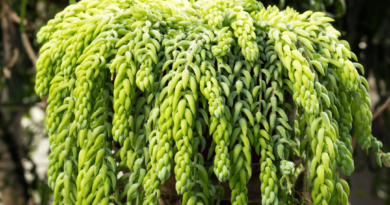How to Create a Drought-Tolerant Garden with Succulents
Introduction:
Gardening is a wonderful way to beautify your surroundings, relax, and connect with nature. However, it can be challenging to maintain a garden during times of drought or water scarcity. That’s where drought-tolerant succulent plants come in. Succulents are perfect for creating a low-maintenance garden that can thrive in dry conditions. In this article, we will discuss how to create a drought-tolerant garden with succulents.
Why Choose Succulents for a Drought-Tolerant Garden?
Succulent plants have unique water-storage abilities, making them ideal for dry and arid climates. These plants store water in their leaves, stems, and roots, which allows them to survive for extended periods without water. Succulents are also low-maintenance and require minimal upkeep, making them perfect for busy individuals or those with limited time for gardening.
Choosing the Right Succulent Plants
When selecting succulent plants for your garden, consider their natural habitat and water requirements. Some succulents require more water than others, and some thrive in full sun, while others prefer partial shade. Here are some drought-tolerant succulent plants to consider:
- Agave – Agave plants are native to arid regions and can survive long periods without water. They come in various sizes, colours, and shapes and are ideal for large garden spaces.
- Aloe Vera – Aloe vera plants are a popular succulent and are known for their medicinal properties. They prefer well-draining soil and can thrive in partial shade.
- Echeveria – Echeveria plants come in a range of colours and shapes, and many have beautiful rosette patterns. They prefer well-draining soil and can be grown in containers or in the ground.
- Sedum – Sedum plants are low-maintenance and require little water. They are ideal for ground cover and come in a variety of colours and shapes.
Preparing the Soil for Succulents
Succulent plants require well-draining soil that allows excess water to drain away quickly. If your soil is heavy and clay-like, it’s best to add sand or perlite to improve drainage. You can also mix in compost to add nutrients to the soil. Make sure to avoid using organic matter that retains moisture, such as peat moss.
Planting Succulents
When planting succulents, make sure to space them out adequately to allow for airflow and prevent overcrowding. Succulent plants should be planted at the same depth as they were in their original containers. Water the plants lightly after planting, and then wait a few days before watering again. Overwatering can be detrimental to succulent plants, so it’s important to let the soil dry out before watering.
Caring for Succulent Plants
Succulent plants require minimal care, but they still need some attention to thrive. Here are some tips for caring for succulent plants:
- Watering – Water succulent plants sparingly, allowing the soil to dry out completely between waterings. In hot weather, succulent plants may need to be watered more frequently.
- Fertilizing – Succulent plants do not require frequent fertilization, but you can feed them once or twice a year with a balanced fertilizer.
- Pruning – Dead leaves and spent flowers should be removed from succulent plants regularly. This helps to improve airflow and prevent the spread of disease.
Conclusion:
Creating a drought-tolerant garden with succulent plants is an excellent way to add beauty to your surroundings while conserving water. Succulents are low-maintenance, require minimal watering, and come in a variety of shapes and colours. By selecting the right succulent plants and preparing the soil correctly, you can create a beautiful garden that thrives




